CST諧振腔體設計分析—CST2013設計實例
Eigenmode Visualization and Q-Factor Calculation
Eigenmode Visualization
The eigenmode results can be accessed by selecting the corresponding item in the navigation tree from the 2D/3D Results Modes folder. The field patterns for each mode will be stored in subfolders named Mode N where N represents the mode number.
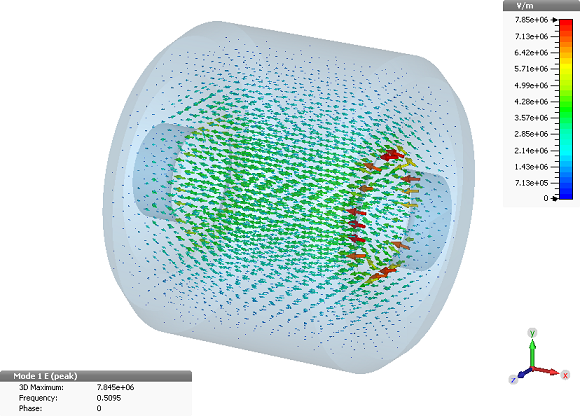
To visualize the electric field of the first mode, select the corresponding item from the navigation bar: 2D/3D Results Modes Mode 1 e. The result data will then be visualized in a three dimensional vector plot as shown in the above picture. (Please note: The field amplitudes of the modes will always be normalized such that each mode contains a total energy of 1 Joule.)
In many cases, it is more important to visualize the fields in a cross section plane. Therefore, please switch to the 2D field visualization mode by pressing 2D/3D Plot: Sectional View 3D Fields on 2D Plane . The field data should then be visualized and appear similar to the picture below. Please refer to the Workflow and Solver Overview manual or press the F1 key for online help to obtain more information on field visualization options.
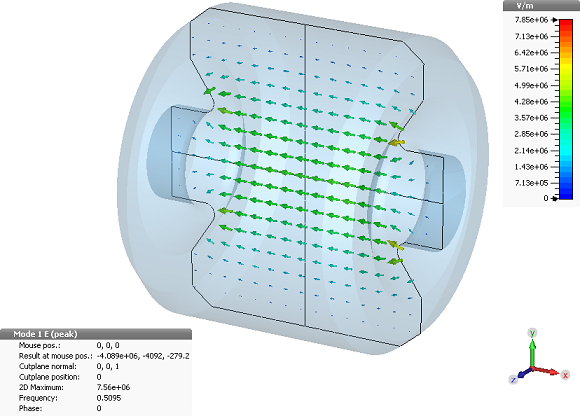
In addition to the graphical field visualization, some information text containing maximum field strength values and resonance frequencies will also be shown in the main window.
Q Factor Calculation
The eigenmodes internal Q-factors, which are an important quantity for cavity design, can be easily derived from the field patterns. Open the loss and Q-factor calculation dialog box by selecting Post Processing: 2D/3D Field Post Processing > Loss and Q .
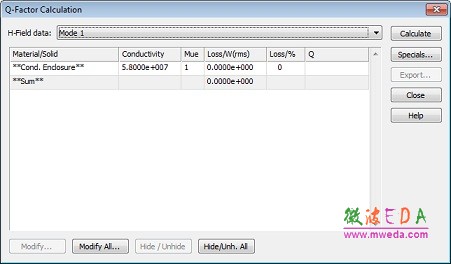
The only setting that requires specification here is the conductivity of the enclosing metal. By default, the conductivity of the Cond. Enclosure is set to copper (5.8e7 S/m).
You may change this setting by clicking on the first row and selecting the Modify button that opens the following dialog box:
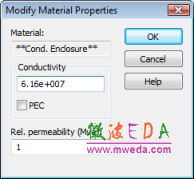
In this example, you can set the Conductivity value to silver (6.16e7 S/m) and press the OK button.
Back in the loss and Q factor calculation dialog box you should now select the desired Mode from the H-Field data list, e.g. the fundamental mode Mode 1. Finally, press the Calculate button to obtain the Q factor value.
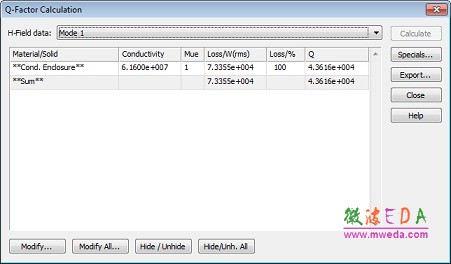
The Q-factor is calculated to be 4.36"104 for the fundamental mode.
-
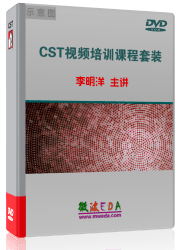
CST中文視頻教程,資深專家講解,視頻操作演示,從基礎講起,循序漸進,并結合最新工程案例,幫您快速學習掌握CST的設計應用...【詳細介紹】
推薦課程
-
7套中文視頻教程,2本教材,樣樣經典
-
國內最權威、經典的ADS培訓教程套裝
-
最全面的微波射頻仿真設計培訓合集
-
首套Ansoft Designer中文培訓教材
-
矢網,頻譜儀,信號源...,樣樣精通
-
與業界連接緊密的課程,學以致用...
-
業界大牛Les Besser的培訓課程...
-
Allegro,PADS,PCB設計,其實很簡單..
-
Hyperlynx,SIwave,助你解決SI問題
-
現場講授,實時交流,工作學習兩不誤






